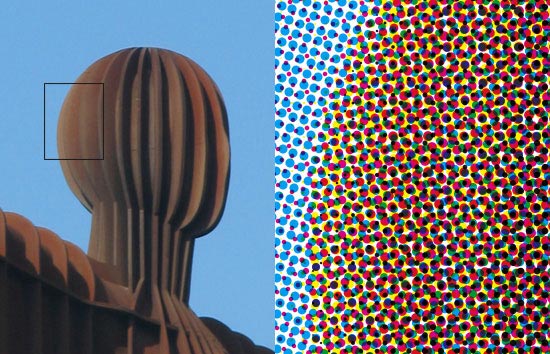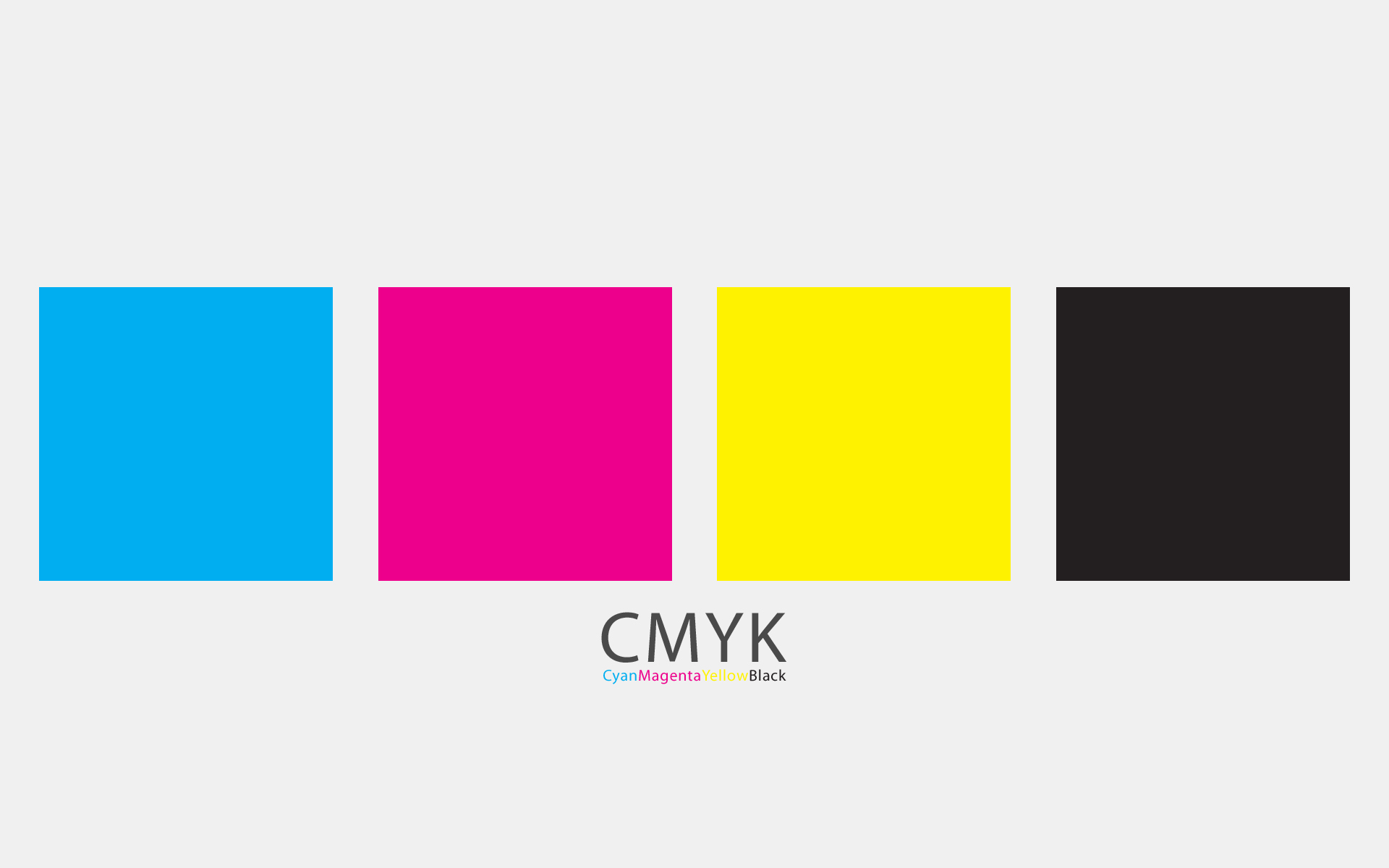CMYK
CMYK is the colour format we use with printed material. It is the ink we have in computers, and stands for Cyan, Magenta, Yellow and Key.
By using CMYK, you are printing with spot colours, as text and image are made up of lots of little dots which can only be seen through a linen tester. By using spot colours, the printer uses four plates to create the document, and this can be more expensive if you are working with a limited colour palette.
Spot colour seen through a linen tester:

Pantone also have formula colours - these are pre mixed colours that you otherwise wouldn't be able to get through CMYK, such as metallic and fluorescent inks. These are very useful if you want a specialist colour. They also include a wide range of normal colours, and can prove cheaper if you are printing less than four colours because they only use one plate.
So if a Cyan was C = 100 M = 10 Y = 20 K = 0, it would be a lot cheaper, and not noticeably different to choose C = 100 M = 0 Y = 0 K = 0 instead.
Screen
The colour system for screen is RGB - Red, Green, Blue. This colour mode is perceived through light, and is how we perceive colour through the rods and cones of our eyes. It is important to work with RGB when working with screen, and CMYK for print so that the correct colours are being seen. This is where the Pantone Matching System helps, so when using CMYK on screen you can make sure you know what it will look like when printed using the swatches.
Pantone
The Pantone Matching System allows designers and printers to get the exact colour you want for your designs, and make it the exact same across formats, materials and mediums. When you find a colour that you want to use, you send the pantone chip to the printers so that they also have the information and can check any issues with you. The printer finds the colour in the formula guide which is then sent to the press. The formula on the pantone chip is then mixed with other colours to get the desired swatch. It is so important to use when working with branding and identity because of the range of products.
Here is a photo I took of the different Pantone swatches:

Special Inks
Metallic Inks
Pantone also do a range of metallic inks for digital printing and include metallic coppers, silver, gold, pink and blue. I've seen the Pantone swatches and they are very smooth to feel, and are like coated colours.
Here is a picture I took of the metallic swatches:

Here are two examples of metallic design:
UV Ink
UV varnish is used for the spot varnishing finish, which gives a design a glossy look and a smooth feel. This ink is particularly good because it is the thickest, and so gives a prominent finish. It looks like this:

And you can also get UV ink for glow in the dark effects! You can use them in screenprinting, which is another benefit of creating screenprinted designs.

Fluorescent Inks
(take pic of options in blenheim)
I found this extract in an article on using fluorescent inks in digital printing:
'The pigments in fluorescent inks work by absorbing ultraviolet energy (invisible to the human eye), and transmitting it as longer waves in the visible spectrum.
Cyan, Magenta, and Yellow process inks can be replaced with their fluorescent equivalents for a strange, while at the same time, semi-natural look. Novelty effects in four color process printing can also be achieved by mixing 50% Pantone 803 fluorescent Yellow with 50% process Yellow and 50% Pantone 807 fluorescent Magenta with 50% process Magenta. Alternatively, using one fluorescent ink, usually Yellow or Magenta, in combination with process colors can add impact to the result or help compensate for a poor substrate. This is most often seen in newspaper work where fluorescent Yellow is sometimes used in place of process Yellow.'
Digital:
Screenprint:







Leave your comment